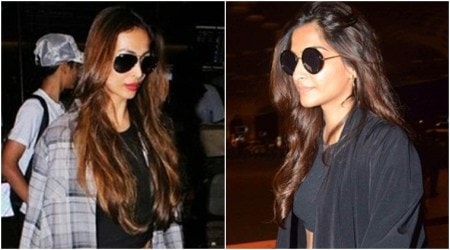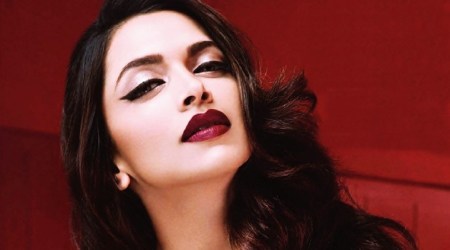 Lemuel Huffman, Kean Rui Alvares, Amit Bitto Dey — men in androgynous modelling in India. (Source: TheBlackPearl Photography/Facebook; Kean Rui Alvares/Alok Johri, Amit Bittoo Dey/Rahul Saha)
Lemuel Huffman, Kean Rui Alvares, Amit Bitto Dey — men in androgynous modelling in India. (Source: TheBlackPearl Photography/Facebook; Kean Rui Alvares/Alok Johri, Amit Bittoo Dey/Rahul Saha)
Growing up, Kean Rui Alvares was always fascinated with make-up. “I used to love watching my mother dress up and remember longing to have my own dress rehearsals, unlike most boys of my age,” says Alvares. Now 26, he is a professional make-up artist and model. Like him, there are many men, who like to dress up, can strike the most beautiful poses, whose high cheekbones can steal more than a glance and who have begun slowly, yet steadily, stirring up a change in the Indian fashion industry.
But is the industry here ready to have more androgynous men walk the ramp? Are those experimenting with gender-fluidity feeling accepted? Women have been wearing pants – on the runway as well as off it – for decades now, but what of men in skirts?
The Indian fashion industry is not alien to male androgynous modelling. Wendell Rodricks, veteran fashion designer is known for the softer silhouettes he dresses up his male models in. Designer Arjun Saluja opened his show at the 2012 Wills Lifestyle India Fashion Week in Delhi with a male model wearing a pleated skirt with men’s shirt. The likes of Rohit Bal, Tarun Tahilani and JJ Valaya are known for floral motifs they embellish on their men’s collection, embroidered shawls, etc.
While men attempting to wear pleated skirts or flowy shirts with floral prints on the runway might seem unusual for many, Rodricks insists the concept has its roots deep in Indian history and culture. “If I wear a lungi, an earring and a necklace of pearls, it is not unusual to Indian aesthetics. We have Maharajahs who have worn more jewels than Maharanis, yogis with more drapes than devdasis. This proves that the topic of androgynous dressing is not alien to the East,” he told indianexpress.com.
 Wendell Rodricks, Express Archive; LFW Summer Resort 2016
Wendell Rodricks, Express Archive; LFW Summer Resort 2016
Come to think about it, even the traditional Garba attire for men — ghagras, angarakhas, achkans, churidars are unisex sartorial choices.
SEXUALITY AND ANDROGYNOUS FASHION
Addressing one of the common misconceptions, Alvares asserts that being an androgynous model doesn’t necessarily have to mean that the person is homosexual. “Society tends to perceive visually. I am a man who celebrates both Yin and Yang — my masculinity and femininity.” So when he chooses to dress up and wear make-up, it is a fashion choice and should not be necessarily construed as a projection of his sexuality. He believes society has made rigid categories and gender is one such. “Because of assigned gender roles, men are expected to be tough and women demure,” he said.
 (Source: Kean Rui Alvares/Alok Johri Photography)
(Source: Kean Rui Alvares/Alok Johri Photography)
 (Source: Kean Rui Alvares/Alok Johri Photography)
(Source: Kean Rui Alvares/Alok Johri Photography)
Kolkata-based fashion photographer and model Amit Bittoo Dey is excited about his debut in London Fashion Week in September. Even before the 25-year-old started off as a model two years ago, he was experimenting with androgynous fashion, and was no stranger to cynicism and stereotyping; which continued even on his entry into the industry. “Which is why, almost every brand continues to choose only conventional men or women models as their faces,” he explains.
 (Source: Amit Bittoo Dey/Arideepto Ghosh)
(Source: Amit Bittoo Dey/Arideepto Ghosh)
But, Dey says, his ‘brand of modelling’ has come to be more accepted now. “If compliments could pay bills, I would have been considered a millionaire! So there is hope,” he adds. Chennai-based Lemuel Huffman, a self-proclaimed drag queen, has a similar story. Though he is yet to find complete acceptance, he believes there has been a change for the better. “Compared to when I started, people are much more open now. Not a lot of people still want it, they’d rather have a girl modelling for them,” Huffman says.
Like Alvares, Huffman agrees that androgyny has got little to do with one’s sexuality. “It’s about art. And art shouldn’t conform to categories, including gender.” And it is definitely different from cross-dressing, which “is one’s personal preference of dressing. It is satisfying a fundamental personal quest. Androgyny is about celebrating both the sexes — it’s different,” he says.
 (Source: Amit Bittoo Dey/Aniruddha Sen)
(Source: Amit Bittoo Dey/Aniruddha Sen)
UNDERSTANDING ANDROGYNY
Ganesh Toasty, a fashion and beauty photographer from Chennai, says that “90 per cent of the industry” doesn’t understand androgyny. “They only know them as lesbians, gays and transgender persons,” he explains, stating how there are less male Bharatanatyam dancers now because of the femininity rendered by the mudras and bhavas (expressions) of the dance form. “Even if they are heterosexual, they are ridiculed and called gays. Now parents don’t even send their boys to learn dance,” he says. Toasty equates this with how men who experiment with gender-fluid fashion are often seen as.
In 2016, he created a beautiful segment called ‘Sui Generis’ (Latin for ‘one of a kind’) when he tried breaking the ceiling of conventional beauty. He chose Huffman as his muse for the shoot, and the result was beautiful.
 (Source: Ganesh Toasty/ Facebook, TheBlackPearlPhotography/Facebook)
(Source: Ganesh Toasty/ Facebook, TheBlackPearlPhotography/Facebook)
Toasty believes that though the industry is gradually broadening its mind, clients continue to be conservative. “Many still want conventional faces,” he says. Far from being an insipid experiment, the photographer insists that androgynous modelling is rather just “comfortable fashion”. As a fashion photographer, he feels it is important to admire beauty in all its manifestations. And with “Lem” (Lemuel), “it was love at first sight” for Toasty.
 (Source: TheBlackPearlPhotography/Facebook)
(Source: TheBlackPearlPhotography/Facebook)
Huffman broke conventions with his winged-eye make-up and sultry marsala hued-pout in Toasty’s Sui Generis. Now that there is more awareness about LGBTQI, a lot more people of the community have come out and are inspiring others to make similar fearless choices, he says. In one of Toasty’s shots, the 26-year-old is posing with faux fur twirled over his body, bronze hair styled into a side puff, looking dreamily yet fiercely into the camera – almost like an embodiment of the fearlessness he is talking about. Modelling for about four years now, Huffman prefers being a photographer’s model than walking the ramp.
 (Source: TheBlackPearlPhotography/Facebook)
(Source: TheBlackPearlPhotography/Facebook)
IS GLOBAL ACCEPTANCE ACTUALLY MORE THAN IN INDIA?
While Rodricks says the concept of androgyny is new to the West, Toasty and Dey are of the opinion that unlike closer home, there are more androgynous models in the international fashion scene because the industry is more receptive.
However Michael Tintiuc, from the European country of Moldova who began modelling in 2007, says ‘androgynous fashion’ is one of the fake trends “that was created by the fashion industry some five-six years ago”. “After it, came a new trend, in which shaved-headed model guys with a face that is not disfigured by intellect, wore sports-wear and sandals with socks. Now those, who mimicked androgyny, changed into sports-wear and shaved their heads clean,” he told indianexpress.com. Having ventured into modelling at 18, Tintiuc wasn’t initially successful. “The look of a tall, skinny, long-haired skater in tight pants was not in demand and looked quite different in comparison to the big, muscular men who were successful in the Russian fashion modelling scene then,” he says.
 (Source: Michael Tintiuc)
(Source: Michael Tintiuc)
Yet, Tintiuc agrees that this is a niche look and most times doesn’t fit the requirements of the labels and brands looking for a “standard look”. Now 28, Tintiuc, whose look was once described as “edgy and rock ‘n’ roll”, has been a part of many runway shows in New York, Paris, Milan, London and Tokyo for various labels like Z Zegna, Ann Demeulemeester, John Varvatos to name a few and featured in magazines such as Vogue Italia, Grazia, GQ, etc.
 (Source: Michael Tintiuc)
(Source: Michael Tintiuc)
Internationally, Miles McMillan, RuPaul Andre Charles, Andreja Pejìc, Erika Kinder, etc., have carved themselves a place in androgynous fashion. Closer home, a few like Alvares, Huffman and Dey are still paving the way for others.
 (Source: File Photo)
(Source: File Photo)
India has a history of men wearing jewellery and floral, flowy silhouettes and even now have them lining their eyes with surma. Yet, is it too sensitive about changes that could challenge its masculinity? Or can an eccentric Ranveer Singh in a kilt, eyes kohled and holding a boombox purse save the day?

